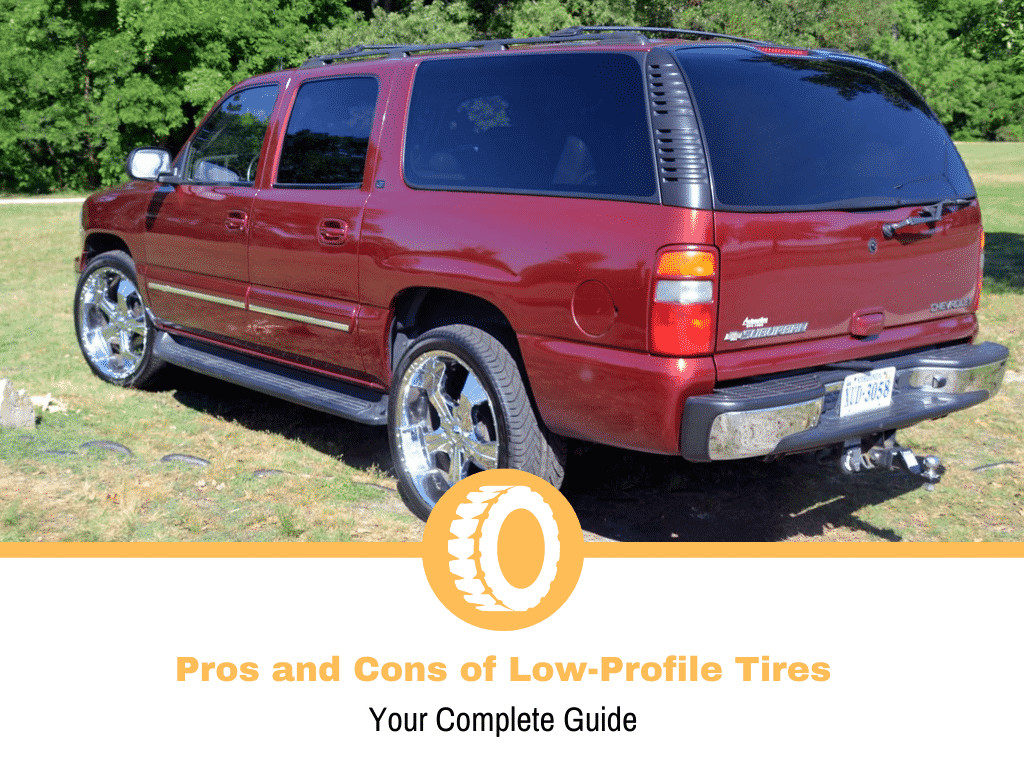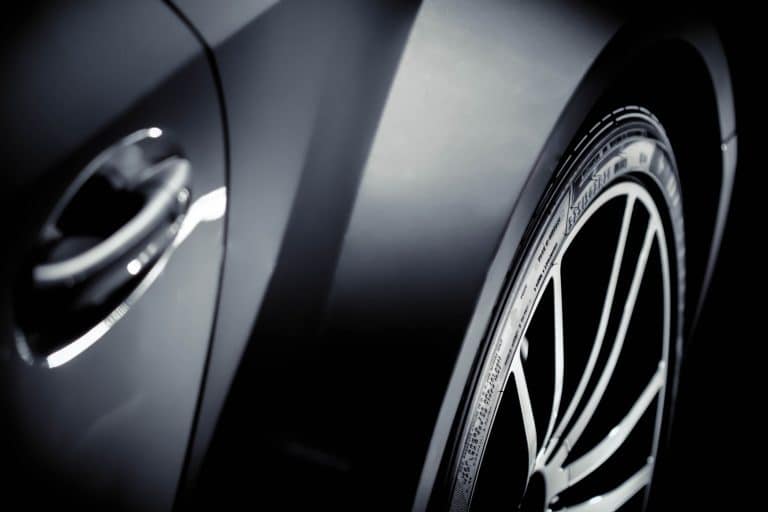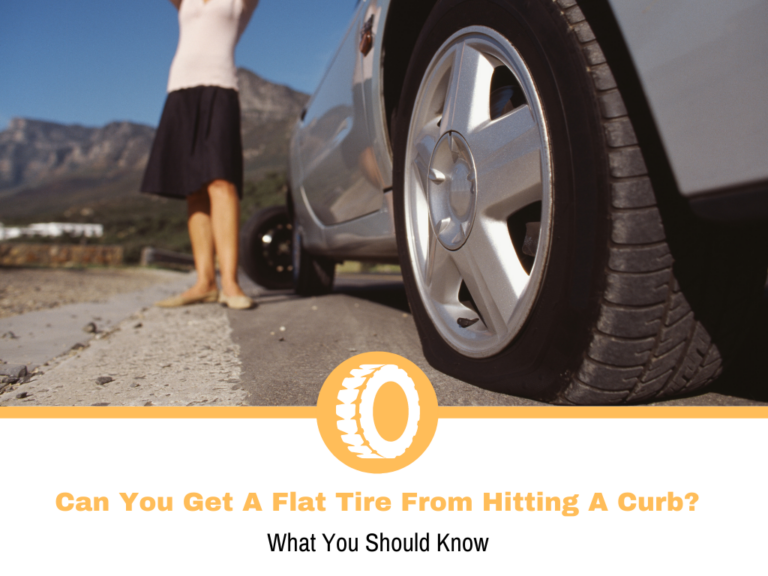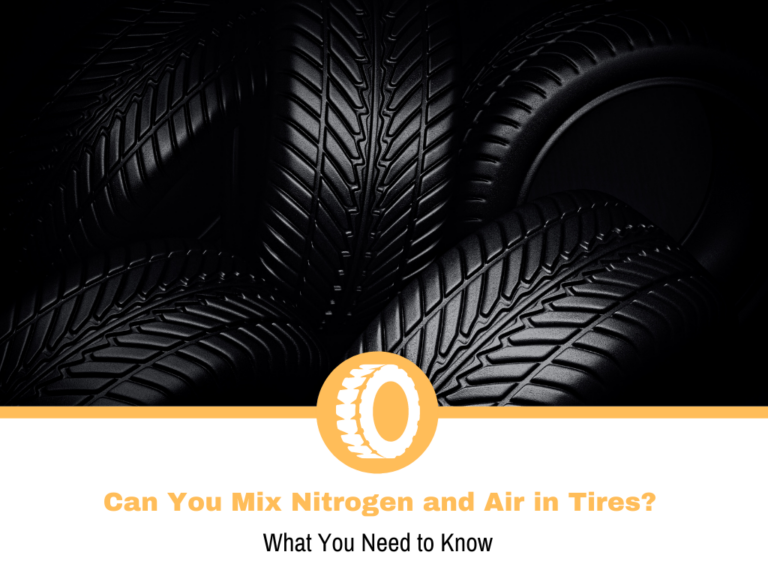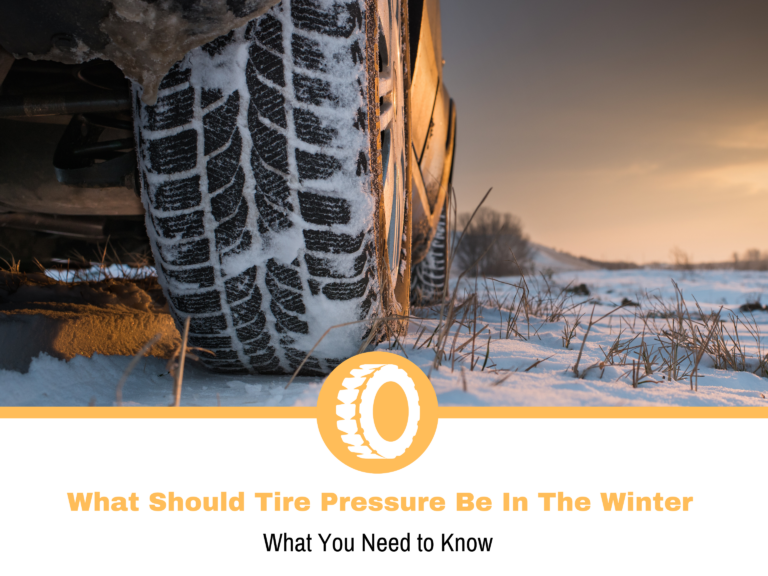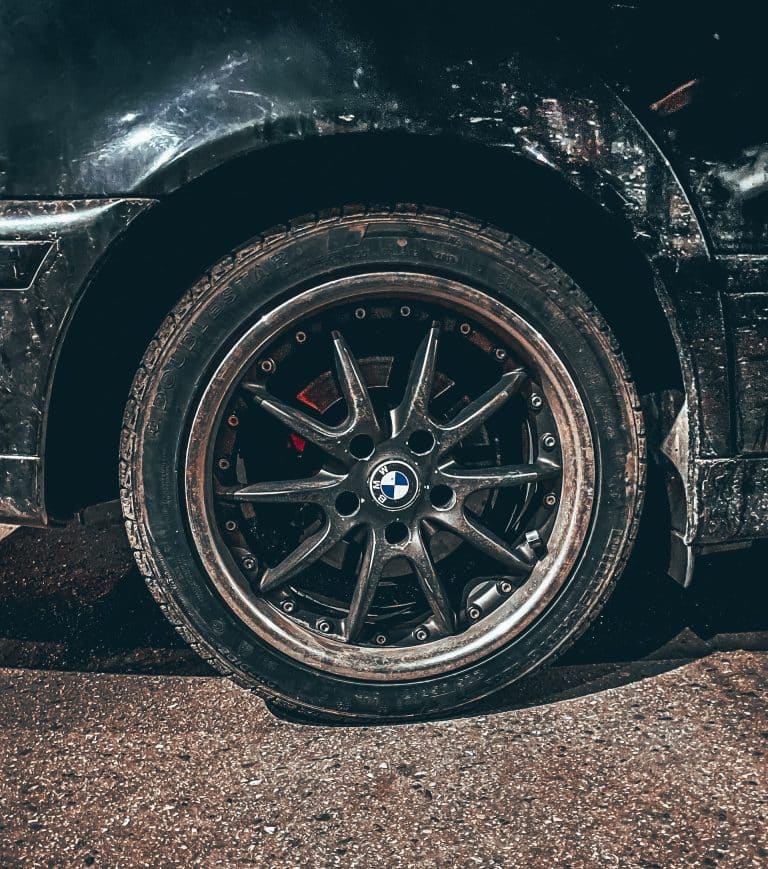Pros and Cons of Low-Profile Tires
It is highly likely that you will see a car with low-profile tires cruising on the road, enhancing the vehicle’s aesthetics.
But good looks are not the only thing that these tires provide; tires with big alloys and small rim size are also known as performance tires. However, in increasing performance and speed, low-profile tires can also cause lower comfort and vulnerability to damage.
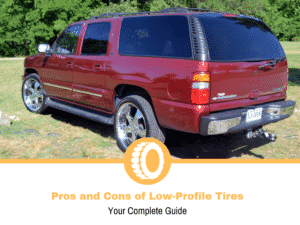
The pros of low-profile tires include performance improvements that are reflected in better handling and higher intensity of braking. You can also add improved fuel efficiency to the list.
But on the downside, these tires can lead to a bumpier ride. Additionally, you will find yourself at the station getting some air or may have to take out the air compressor frequently due to rapid deflation. If that’s not all, low-profile tires are also not very conducive to drive on a bumpy road.
Low-profile tires have shorter sidewalls, but they are also reinforced, and also they are built to be more rigid than other tires. Technically speaking, every tire’s profile is defined by its width and height, which are connected in the sense that changes in one section will lead to changes in the other.
Formula for Tire Profile (Series) = Tire height / Tire width * 100
Let’s learn more about the advantages and disadvantages of low-profile tires.
Pros of Low-profile Tires
Drivers who understand the mechanics of taking the vehicle on the road will prefer low-profile tires because of these reasons.
Better Handling
Low-profile tires have shorter but more rigid and reinforced sidewalls. The sidewall reinforcement is aimed to compensate for the reduction in the height. Also, you will notice that these tires have larger contact areas as their width is also increased. The combined impact of both these factors leads to better friction with the surface, improving the handling and giving more control to the driver.
High-Performance Braking
The braking assembly and equipment are attached to the rim. In low-profile tires, the rim size is larger because the tire size is reduced. So, to keep up with the mandated wheel size, the rims have to be made bigger, which gives more space to install better performing and larger braking equipment. Since low-profile tires have higher performance, it is evident that the same car that used to burn out at 100 mph can now go up to 110 mph before burning.
So, it is essential that if you are speeding high, you will also need the right equipment to control the vehicle at that speed. So, by default, a low-profile tire comes with better braking equipment that is well suited to help you control the car even at a higher speed.
Improvement in Fuel Efficiency
A tire’s rolling resistance contributes to optimizing fuel efficiency. More resistance leads to lower fuel efficiency, and lower resistance leads to better fuel efficiency. The low-profile tires have shorter sidewalls; the tread patterns are also relatively less than high profile tires.
The combined effect of shorter side walls and fewer treads reduces the rolling resistance, positively impacting fuel efficiency.
Cut Smooth Corners
You may experience your car tires squealing while cutting tight corners or when cutting it at higher speeds. This happens because of the sidewall flex. Sidewall flex is the amount of flexibility in the tires, which surfaces when cutting corners and higher sidewall flex means that the vehicle will wobble at higher speeds.
A tire’s height impacts the sidewall flex. Less height means lower flex. That is why with low-profile tires, you can cut tight corners even at higher speeds without risking turning over or excessive tire wobbling.
High-Speed Driving is Easy
low-profile tires can easily increase the speed of the car. This is possible due to the lower diameter, which improves the gearing ratio. Normal tire’s gearing ratio is relatively lesser than low-profile tires. A lower gearing ratio does not decrease the car’s speed, but it also reduces the mileage at higher speeds.
In contrast, the low-profile tires have an improved gearing ratio, which means you will drive the car at higher speeds without changing the mileage.
These are the major advantages of low-profile tires that directly impact your driving experience and overall performance. In addition to this, there are a few associated benefits like better road traction, driving at lower tire pressure, and smooth driving.
Cons of Low-profile Tires
Just as everything that shines is not golf, low-profile tires also have some demerits. Let’s list them down to get a complete overview of the effectiveness of low-profile tires.
The Ride will be Extra Bumpy
The onus of providing a smooth ride falls on the suspension and the tires. In low-profile tires, the amount of space between the surface below and the rim decreases, which means that the tires will have a lesser capacity to absorb shocks.
On the other hand, the suspension system has to absorb more driving-related bumps. If the vehicle’s suspension system is configured according to the new tire profile, you don’t have to worry. If not, expect a more bumpy ride, and if the shock intensity increases, there is a risk of damaging the suspension system.
Higher Frequency in Deflation
Even by looking at it, you can easily tell that low-profile tires will have a lower capacity of holding the air only because they are thinner. Due to this, the tires will deflate more often as compared to a high-profile tire.
That’s not all; if you get a flat, the low-profile tire will deflate quicker than its counterparts. Less air means in the tire means you either have to replace your tire with the spare one quickly or have to find a garage.
Higher Wheel Damage
Here again, we need to talk about the fact that there is less distance between the road and the wheel rim due in low-profile tires. In this scenario, if you hit a pothole or a bump on the road, it can damage the rim and even lead to an uncomfortable ride.
With an increasing number of bumps and potholes coming in contact with the tires, you run the risk of rim bending. This can easily lead to other serious rim issues.
Issues with Icy and Snowy Roads
The features that provide more traction, better grip, and higher flex on dry roads can cause an issue on icy roads. low-profile tires plow through the icy roads rather than rolling through them. Due to this, there is a higher risk of aquaplaning. Aquaplaning is the act of a vehicle sliding uncontrollably on a wet surface.
Consider this as a final verdict; you can use low-profile tires without any hesitation, provided that you are well aware of the risks and can mitigate them. For instance, don’t drive too fast on a bumpy road; always keep a tire pressure compressor in the vehicle, avoiding potholes.
FAQs
Can I buy low-profile tires in gaps?
No, you should not do that. Ensure that when you get low-profile tires, get all four of them in one go. Do not drive the vehicle with mixed tires like two low-profile and two high profile.
Do low-profile tires wear out relatively quickly?
By principle, it should not happen. Every tire is designed and manufactured according to its utility and ability to endure. Due to these changes, the tire’s configuration also changes. However, seeing the fact that low-profile tires are susceptible to damage on the road, especially if the surface is bumpy, you are carrying extra load.
How to ensure proper maintenance of low-profile tires?
For one, even the urge to drive the car at high speeds will be higher, drive responsibly and carefully. More importantly, ensure that you maintain the tire pressure. Overinflation will lead to an uncomfortable ride, and less than optimal tire pressure will lead to overheating. So, always keep an eye on the tire pressure.
